Affiliate disclosure: This post may contain affiliate links. Please see our Privacy Policy.
Emergency food kits can provide an incredible sense of security. There’s nothing that compares to the peace of mind of knowing you have food on hand for the next emergency, be it tomorrow or 25 years from now.
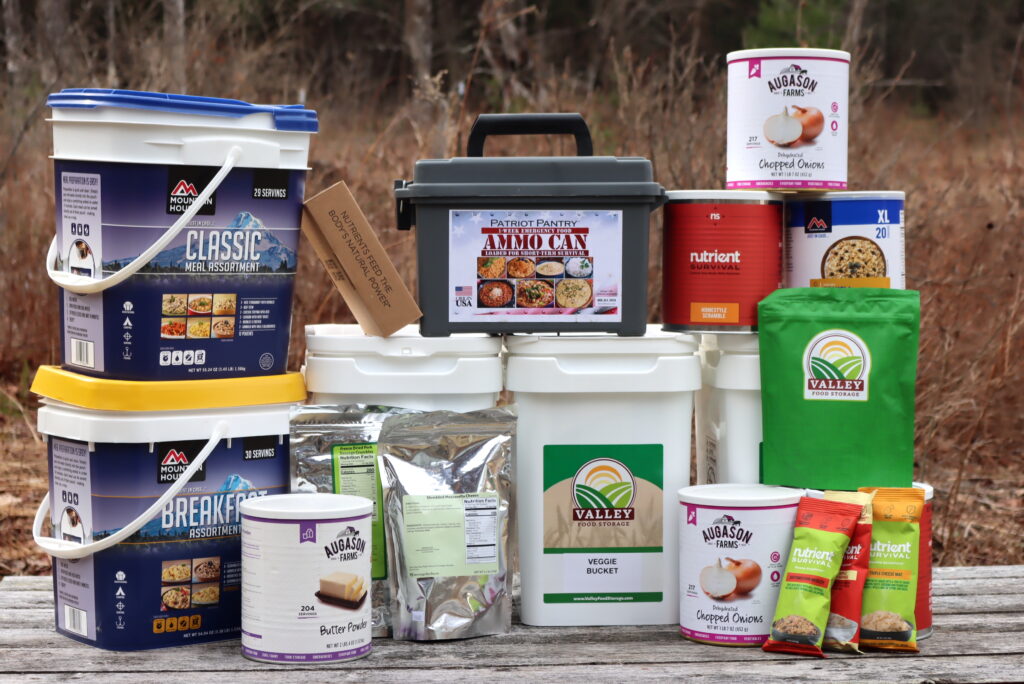
Emergency food kits come in handy for all sorts of everyday emergencies, and they have the potential to be life-saving during major disasters.
The problem with shopping for emergency food kits is that few people actually take the time to test and review the kit. It’s something that most people just stick in their back closet for “just in case.”
Emergency food reviews almost always say things like “fast shipping” or “great packaging,” but you never really get feedback on the quality of the food.
If and when an emergency happens it’s not as though they’ve got spare time (and an internet connection) to casually review their emergency food kit. They’re living the emergency, and for better or worse, this is the emergency food kit they have.
Personally, I only feel confident storing food that I know is tasty, nutritious, and easy to prepare. If I’m storing an emergency food kit, it’s because I’ve already cooked every single meal in that kit and I know it’s worth both the money to buy and space to store.
I’ve eaten long-term storage emergency food kits from just about every supplier on the market. Most companies make freeze-dried emergency food kits that last 25 years or more, but a few make other unique options like survival ration bars and MREs.
I’ll walk you through the best (and worst) emergency food kits available from every supplier, as well as some of the more obscure options for your food storage.
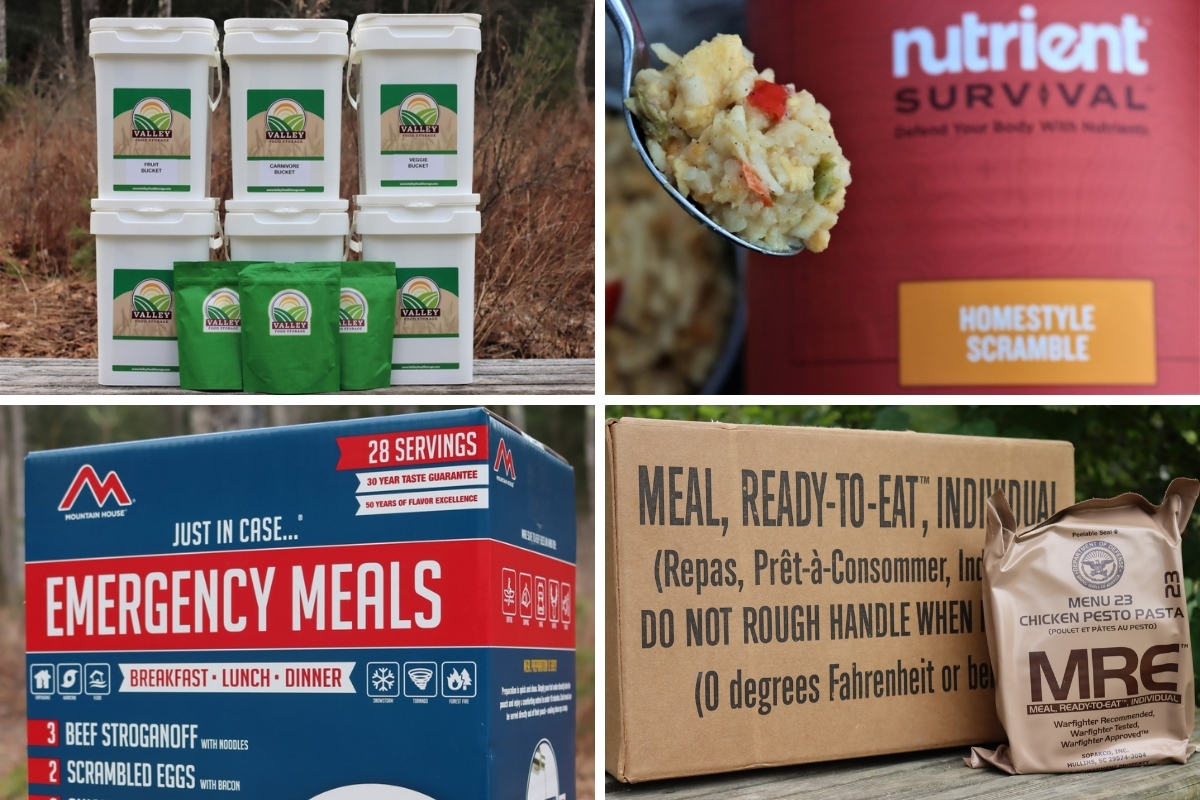
Best Emergency Food Kits
In a hurry and don’t want to read through everything? No worries, here’s the quick version:
- Best Overall: Valley Food Storage
- Best Budget Friendly: My Patriot Supply
- Best Premium Kits: Mountain House
- Best Freeze Dried Pantry Staples: Emergency Essentials
Choosing an Emergency Food Kit
Unfortunately, there isn’t a simple “one size fits all” option when it comes to choosing the best emergency food kit for your family.
There are a number of factors to consider, including:
- Family Size – If you’re eating alone then single-serve pouches are much more useful than no. 10 cans.
- Cooking Skills – Given basic storage food ingredients like freeze-dried meat, cheese, and vegetables, can you prepare a meal from scratch? Even if you have the skills, will you have the equipment (dishes, etc) in an emergency? If not, pre-made meal kits might be a better option, especially for short-term emergencies.
- Environmental Conditions – Do you live in an area with scarce water supplies and high temps? In that case, low water options like ration bars and MREs might be a better way to get through a short-term emergency. Or, if you live in a relatively cool and water-rich region, as I do here in Vermont, then options that require longer cook times and lots of water work well.
When evaluating individual emergency food kits, be sure to look at:
- Preparation – Is the meal instant, as in just adding boiling water and waiting? Or, does it require cook time with pots and pans? Or, is it no “cooking” required, as is the case for MREs and ration bars?
- Calories – Many emergency food kits are short on calories, averaging 800-1,200 calories a day. Sure you can survive on that for a short time, but you’re preparing so you don’t have to, right? Reputable companies offer 1,800 to 2,500 calories per day in their kits.
- Nutrition – Our bodies need more than just calories, and even kits that guarantee 2,000 calories per day often fall short in terms of protein and nutrients. It’s easy to bulk out a kit with oatmeal, white rice, and sugary drinks, but kits that actually offer nutrition are a much better option.
- Package Size – Single serve packs are usually more expensive, but they’re much more practical for small family sizes and will save money by reducing waste in the long run. Large families, on the other hand, are much better off with bulk packaging.
- Flavor – Everyone’s tastes are different, and you can’t please everyone. Most emergency food kits include comfort foods designed to please a wide variety of tastes. Some kits are for more adventurous palates and include a wider variety as well as ethnic dishes to keep things interesting.
- Selection – Planning for a short-term emergency, it’s fine if the kit only includes 2-3 types of food. For longer-term emergencies, measured in weeks or months, you’ll want more options.
- Cost – Some emergency food kits cost quite a bit more than others, but often you get what you pay for. The more expensive kits tend to have more nutrition (protein, etc), and more calories. That’s not always true though, and there are a few good economy options as well.
If you’re worried about the price of freeze-dried emergency food kits and you plan on packing in a good bit of food, you can always invest in a home freeze dryer. A home unit costs about half as much as a one-year emergency food kit, and they’ll preserve literally hundreds of pounds of food a year for decades.
Not a bad investment, especially if you have a garden and you’re growing your own produce.
Best Emergency Food Kits
Everyone’s needs are slightly different, and in truth, the best emergency food kits are those that your family is capable of preparing, and then also enjoys eating in an emergency.
That’ll depend not only on your tastes, but your cooking skills, nutritional needs, and family size. Budget, of course, is also a consideration, as some of these emergency food kits are a lot more affordable than others.
I’ve tried food from each and every emergency food company, and these emergency food kit suppliers consistently produce the highest quality food for a reasonable price.
As I mentioned above, my favorite all-around supplier is Valley Food Storage, as their kits are high quality and taste great.
If you’re on a tight budget, My Patriot Supply is the best option, as they offer high-quality economy kits.
Valley Food Storage
Although their emergency food kits are not “just add water,” Valley Food Storage makes some of the highest quality kits available.
This type of kit is actually a lot more common than the “instant” kit that is ready in 5 minutes.
Most require you to empty the pouch into a pot with a measured amount of boiling water. The food then simmers and absorption cooks until it’s reached the perfect texture (no straining required).
It does mean dishes, namely cooking pots, but it also means you get a lot more selection.
In a short-term emergency, instant food options are perfect.
For a longer-term emergency, you’re going to need to figure out a way to cook anyway, and the extra variety offered by these kits is well worth the effort.
While other companies often specialize in 72 hour or 2-week kits, most of Valley Food Storage’s customers are buying the longer-term emergency food kits with either 3 months, 6 months, or a full year’s worth of emergency food.
They have the quality and variety to keep you satisfied over the long haul.
Valley Food Storage also sells more than just emergency meal kits. They also sell ingredients like freeze-dried fruit and veggies, as well as freeze-dried meat, eggs, and cheese.
This means you can combine them with your other long-term food storage items like pasta, flour, rice, and beans to add even more variety to your diet over the long haul.
Pros
- Impeccable Quality – In blind taste tests with similar items, my friends and family can always pick out the Valley food storage items.
- Great Selection – They offer both prepared meals that are ready to cook, as well as single ingredients (fruit, cheese, meat, veg) for those that want to cook from scratch.
- Durable Bucket Packaging – The emergency food comes packed in 4 serving mylar pouches which are then packed into durable food-grade plastic storage buckets for easy transport and storage.
Cons
- Expensive – While these are some of the highest quality emergency food kits out there, they are comparatively expensive. They are much less expensive than MREs (Meals Ready to Eat) or Camping meals like Mountain House, but they’re much more expensive than the budget options like My Patriot Supply.
- Cook Time (and Equipment) – These are not “instant” food, and they’re best for the longer-term emergency where you’ll be able to work out access to dependable cooking facilities (like in a shelter-at-home situation).
- No Single-Serve Options – The smallest package is 4 servings, and though they are resealable, it’s not ideal for single people.
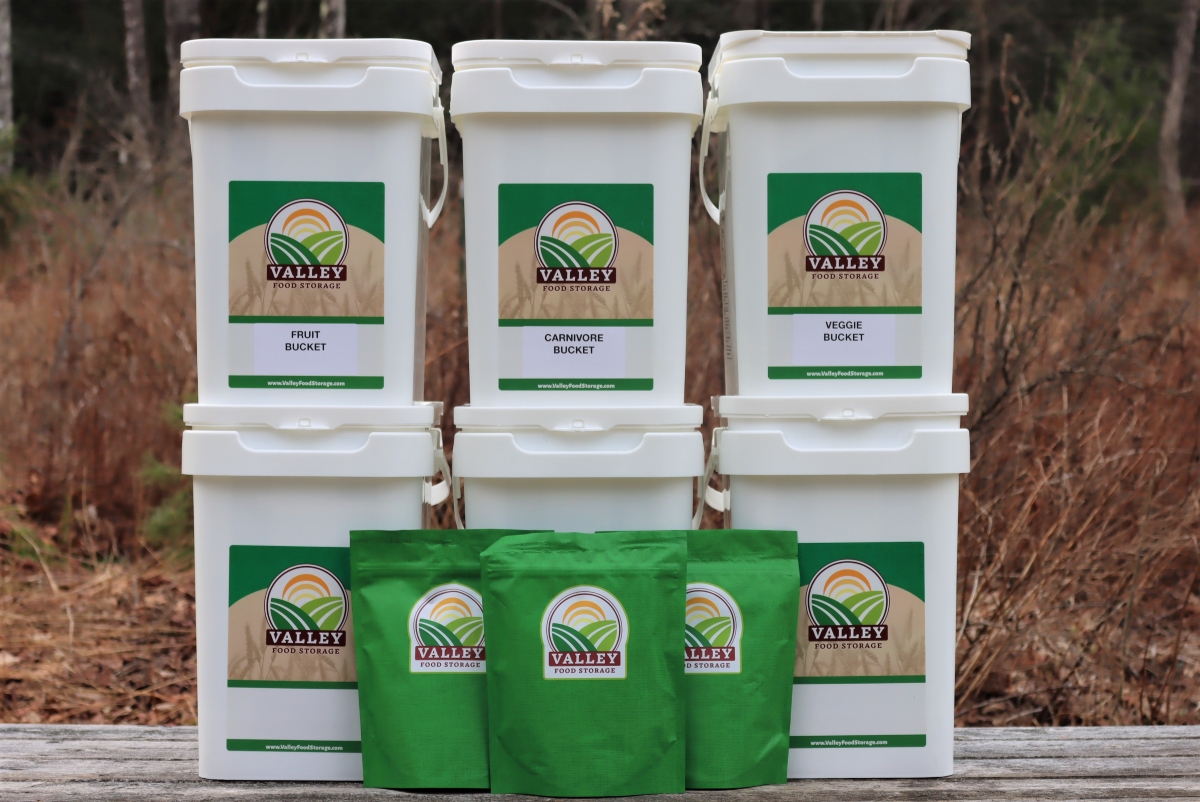
My Patriot Supply
If you’re on a tight budget, My Patriot Supply is by far the best option in low-cost emergency food kits.
I’ve tried every single one of their meals, and while they’re not exactly grandma’s home cooking, they’re all MUCH better than most of the convenience foods you’ll find in the center aisles of the grocery store (ie. Chef Boyardee, microwave dinners, etc).
Don’t believe me? You can read my full Patriot Food Supply review and see pictures and taste evaluations of every one of their recipes if you’re curious.
They also guarantee that every single one of their kits contains more than 2,000 calories per day, with ample protein to keep you going.
There are a number of companies that advertise low-cost emergency food, and it’s unfortunately become a race to the bottom where most are sacrificing quality, flavor, and nutrition. They’re creating “cheap calories,” and many are failing even at that as calorie counts on some of the “discount” emergency meal kits are as low as 600 calories per day.
Even if you’re on a budget, you should still choose a kit that’s going to actually contain enough calories (and nutrition) to provide meaningful and satisfying meals during an emergency.
My Patriot Supply is by far the best option in the low-cost category.
If you’re looking for a relatively inexpensive emergency food kit that covers all the bases, I’d recommend their Ultimate Solar Powered Cooking and Emergency Kit. It not only contains emergency food but everything you need to cook it, as well as a high-grade water filtration system and solar charger for your devices.
You should always start by checking their “deal of the day” page. It features a different product each day, and they’re usually half off.
Pros
- Low Cost – An excellent value, while still providing tasty food and more than 2,000 calories per day.
- Durable Packaging – Everything is shipped in 4 serving mylar pouches packed inside durable storage totes.
- Good Selection of Comfort Foods – While they don’t have exotic options like Thai curry on their menu, they do have a great selection of American comfort food meals that will keep even the pickiest eaters satisfied.
- One-Stop Shopping – They also sell all manner of other emergency preparedness items, such as:
Cons
- No Single-Serve – Everything’s packed in resealable 4 serving mylar pouches, which is fine for groups of 2+ people but not ideal for individuals.
- Cook Time – The food requires 15-20 minutes of simmering on the stove in a pot, rather than being “just add how water” instant.
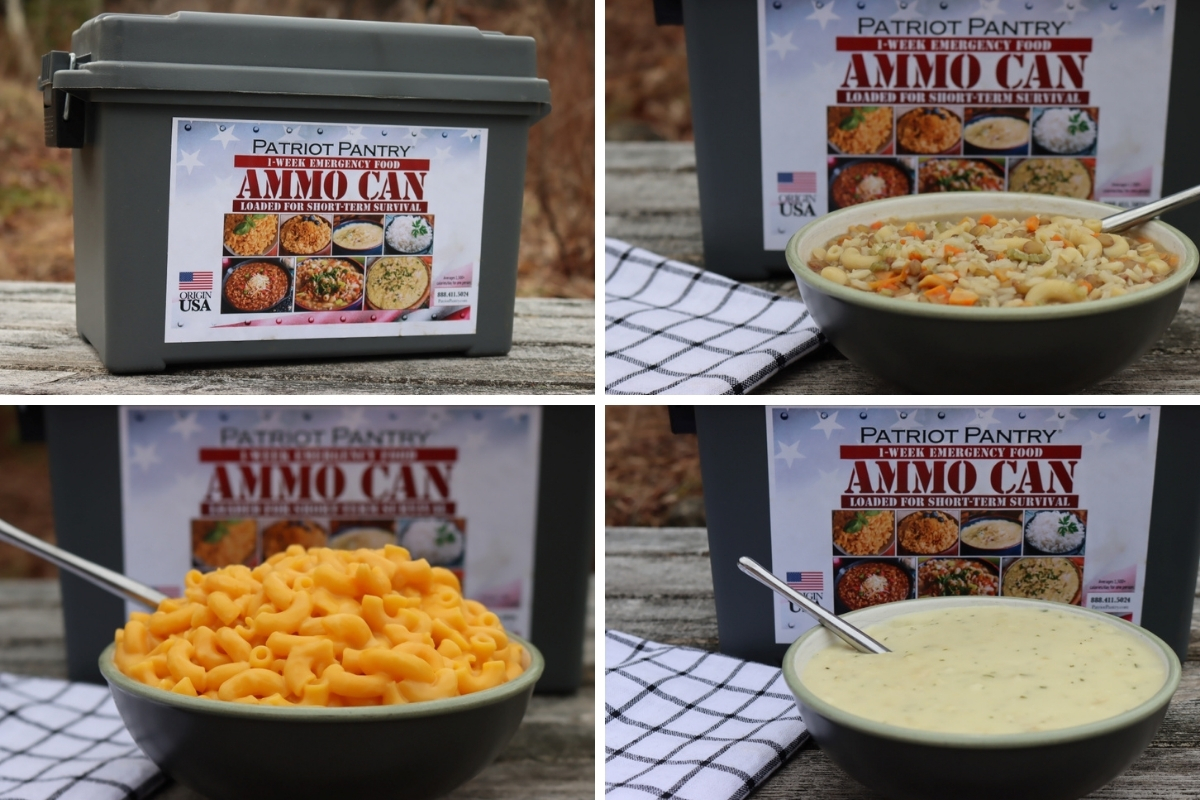
Emergency Essentials
For experienced home cooks that are just looking to supplement their regular food storage with freeze-dried versions of perishable ingredients, I’d suggest Emergency Essentials.
They specialize in emergency food kits for home cooks looking to prepare for the long emergency, where they’ll need to shelter in place for months or weeks at a time.
They have the largest variety of freeze-dried ingredients, and they carry options that you just can’t get at any other provider.
Cooking and Baking Essentials such as butter powder, powdered whole eggs, and dry milk powder can be combined with your own shelf-stable pantry staples like flour and sugar for home baking.
(If you don’t know how to pack flour and sugar for long-term storage, you can also buy pre-packed no. 10 cans of those too.)
Freeze Dried Vegetables make for quick just add water soup, casseroles, or simple side dishes that are shelf-stable for 25+ years and ready to go at a moment’s notice.
Ingredient Kits are perfect for people who know how to cook, and they bundle all the shelf-stable freeze-dried emergency food you’d need to create all manner of meals.
For example, their Essential Omlet Kit has everything you need to make a killer breakfast, including freeze-dried eggs, potatoes, peppers, onions, mushrooms, and tomatoes. Make an omelet, or re-hash them into any of your favorite recipes.
They also carry emergency food from other suppliers, which are better options in case of short-term emergencies where you might not have cooking facilities. These include meals from My Patriot Supply and MREs (Meals Ready to Eat).
Beyond that, they also supply high-quality emergency supplies to help you prepare beyond just emergency food.
Pros
- Bulk Ingredients – Great for stocking a prepared pantry, provided you’re an experienced home cook and plan on having cooking facilities in an emergency.
- High Quality – All their ingredients are high quality.
- Great Price – If you’re prepared to cook your own meals, buying ingredients can save quite a bit as opposed to prepared emergency meal kits.
Cons
- Cooking Skills – This option only works if you already know how to cook meals from scratch at home.
- Specialized Ingredients – It takes some practice to rehydrate freeze-dried food, and you can’t always use it in exactly the same way you would fresh ingredients. I’d suggest practicing cooking for your food stores before an emergency, as pantry ingredients are not as foolproof as prepared meal emergency food kits.
Other Emergency Food Options
The companies listed above are the best in my opinion, in terms of providing good value, nutrition and flavor. There are other manufacturers in the “survival food” space, and they all do indeed provide calories, but these are by far the best in my opinion.
At this point, I do not recommend:
- 4Patriots (different from My Patriot Supply, Full 4Patriots Review)
- Legacy Food Storage (Full Legacy Review)
- Wise Food Storage (Readywise)
- Numanna
- Augason Farms
If you’d like to know why I don’t recommend them, you can read my specific reviews of those companies.
Beyond freeze-dried long-term storage emergency food, there are also a few other options to fuel your body through an emergency.
Freeze Dried Camping Meals
Made by companies like Mountain House, Backpacker’s Pantry, and Peak Refuel. They’re lightweight, single-serve, just add water, and designed to be extremely portable.
They’re also extremely expensive.
Mountain House has recently reformulated many of their meals, and as of 2025, they my favorite cook in pouch freeze dried meal.
Backpacker’s Pantry is consistently the lowest-rated of the three companies, and I personally don’t like their food. It’s just not to my taste, but everyone’s different.
Peak Refuel is the newest company, but they only have a few meal options. Though they’re comparable in price to mountain house and backpacker’s pantry, they they tend to have more protein.
If you do choose to supplement your emergency food storage with more expensive single-serve freeze-dried backpacking meals, I’d recommend choosing meals from Mountain House.
(Since they’re usually purchased by campers and backpackers, you can find these online at places like REI and Cabellas, which will often still have stock when the emergency food kits are out of stock elsewhere.)
MREs
Meals Ready to Eat or MREs are ready-to-eat meals that don’t need to be rehydrated like freeze-dried food. They’re hermetically sealed in specialized pouches in a process that’s similar to canning meat and vegetables (but without the can).
They come with a heat pack that’s activated with a small amount of water, around 1 ounce (30 ml, or 2 Tablespoons). That water causes a chemical reaction in the heat pack, and then you press the heat pack to the food pouch for about 5-10 minutes until it’s heated.
The water doesn’t even have to be potable because it doesn’t actually come into contact with the food.
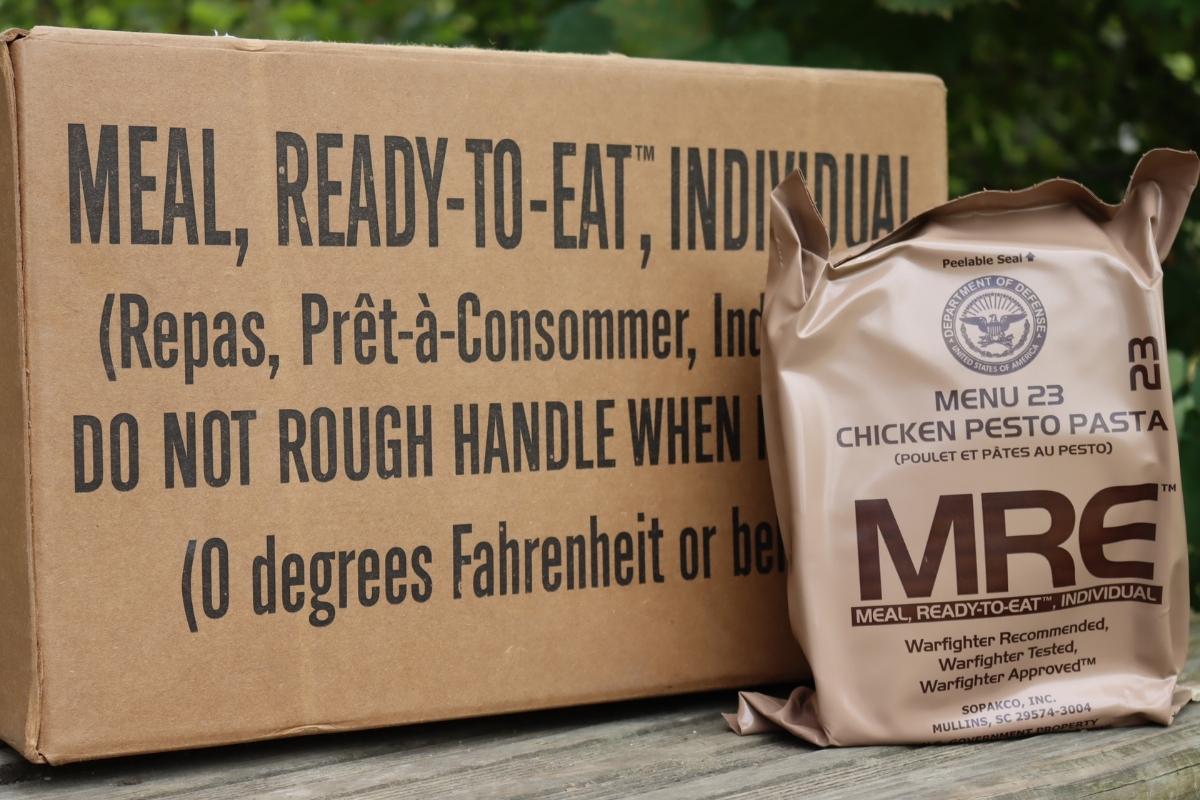
Inside the MRE, you’ll find a complete meal with an entree (usually a pasta dish, chili, or similar comfort food item). There are also side dishes like crackers, jam, drink mixes, and treats like pop tarts or candy.
All of it is sealed for storage, and they’re usually rated to store for 3 to 5 years.
MREs don’t store as long as freeze-dried food because they’re already hydrated, and though the food is “sterilized” as it’s packed to kill bacteria, that doesn’t destroy the natural enzymes in the food. After several years, the food in an MRE begins to degrade (just like canned food stored for several years).
They’re good for short-term emergencies where you might not have access to any cooking facilities, and where potable water is in short supply.
Over the long term, they’re expensive and your food options are limited. Civilian MREs usually come in crates with around 5-6 different types of meals.
MREs can be hard to find, but there are a few suppliers that keep them in stock consistently:
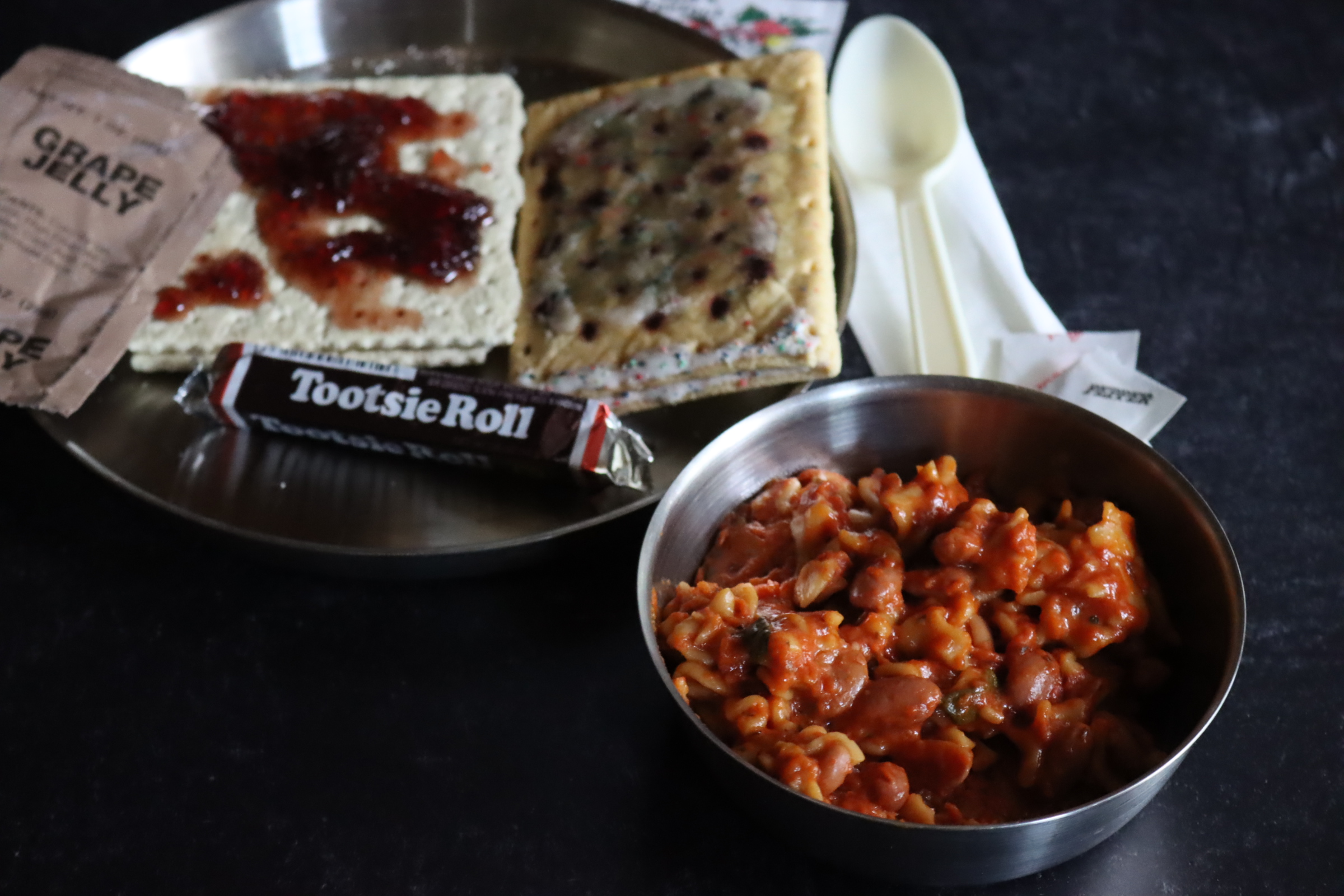
Survival Rations
For really short-term emergencies, survival rations are a good stop-gap measure. They’re food bars specifically designed for lifeboats and other emergency survival situations.
They’re a great thing to keep in the car or your backpack “just in case.”
Survival ration bars are formulated to provide nutrition without making you thirsty, and most are certified by the coast guard for emergency situations.
They’re basically nutrient-fortified long-term storage shortbread cookies, so they’re pretty tasty (though monotonous, so don’t expect to survive on them long).
Survival ration bars are available from:
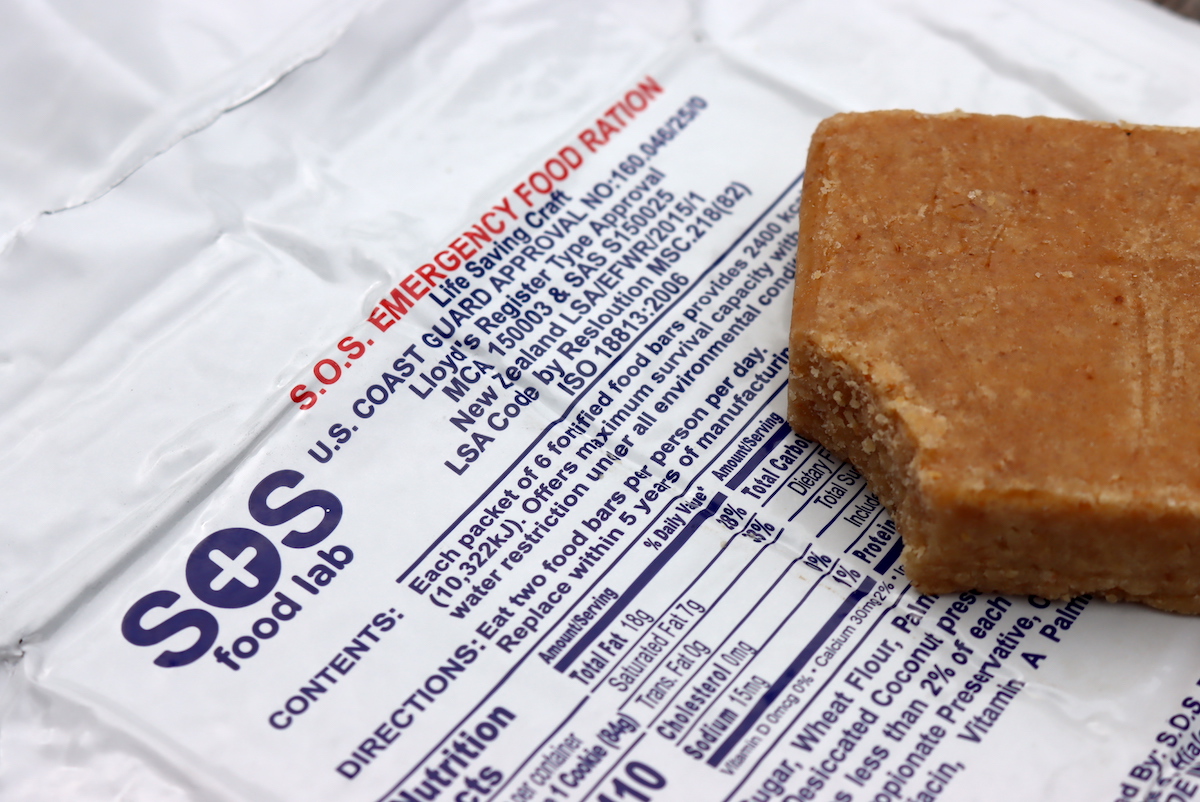
Beyond Emergency Food Kits
Food isn’t the only thing that’s good to have on hand for an emergency. Depending on the type of emergency, these things might also come in handy:
Water Filtration & Storage
Canning water at home is an inexpensive way to ensure a supply of potable water, provided you have access to canning jars which is questionable these days. It works well for us since we don’t have earthquakes and just about every conceivable emergencies involve us sheltering at home.
For a longer-term emergency, you’ll need some sort of water filtration system. We use a Berkey Filter, which is really top-of-the-line in terms of home water filtration.
(2024 Water Filter Update: Berkey is having supply chain problems, and they’re not readily available. Occasionally, they’re available through Pleasant Hill Grain and a few other suppliers, but not dependably. Consider an Alexapure Filter as an alternative, as they’re similar, and much more readily available these days.)
Many people also opt for storing water in bulk water storage containers and sterilizing with chlorine tablets, which works too.
Sanitation – We have a composting toilet setup for emergencies, and there are plenty of plans/ideas in The Humanure Handbook, which discusses all the practical necessities of dealing with human waste in emergencies. If you’re looking for a simple solution though, Nature’s Head makes some of the best self-contained composting toilets available.
For washing clothes, we use a small pedal-powered washing machine that’s incredibly efficient. My 6-year-old daughter absolutely loves it, and actually begs to wash her own clothes with it. Simple to set up and use, you can see my full review here.
First Aid
Hopefully, you already have a well-stocked first aid kit at home, one that contains more than just a few bandaids. If not, now’s a great time to start.
Having everything you need at home to treat simple injuries can be incredibly valuable, especially with emergency room availability (and costs) being what they are these days.
My Medic has some great options, pre-packed for just about any scenario, from a small everyday carry kit, to a car emergency kit, all the way up to a long-term backwoods medical backpack.
Beyond first aid, the main causes of death 100 years ago are all now easily prevented with modern antibiotics. They’re hard to come by short of a trip to the emergency room, but there is one company that prescribes emergency antibiotics for anyone hoping to prepare in advance. A single kit comes with a full course of the five most common types of antibiotics, as well as a book explaining their use.
Things like animal bites, bladder and kidney infections, diarrhea (from contaminated water), pneumonia, and tetanus can all be fatal, but they’re easily treated with simple antibiotics.
Preparedness Resources
Looking for more resources to boost your resilience in uncertain times?
- Survival Gardening: Our Real Life Dry Run
- Choosing a Survival Seed Bank
- How to Freeze Dry Food at Home
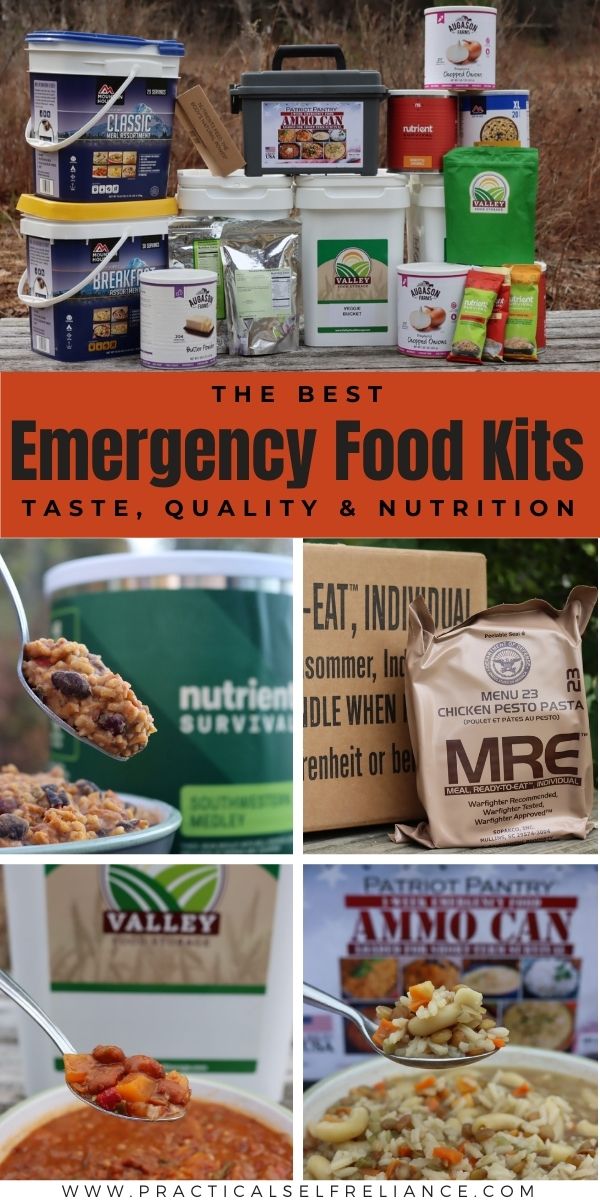
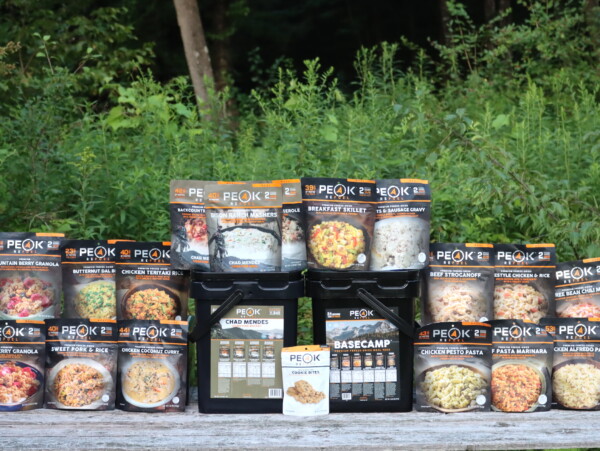
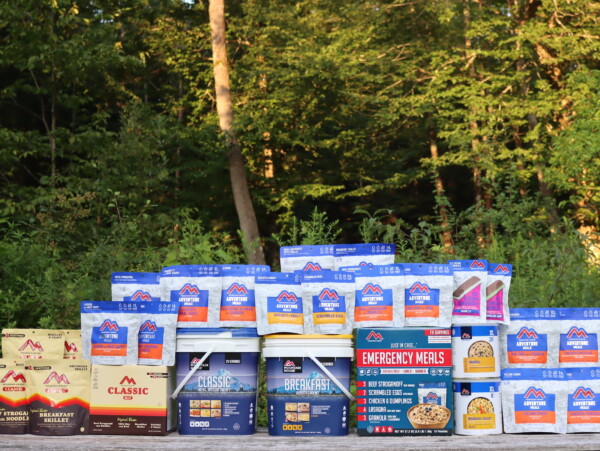
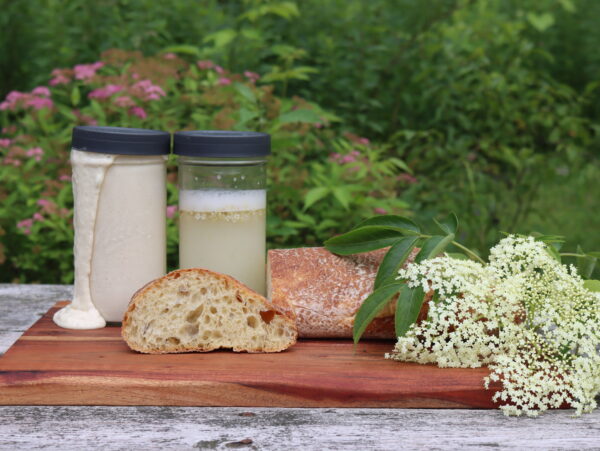
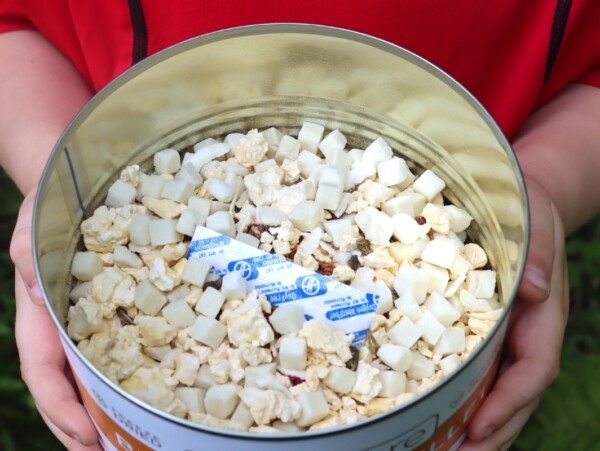
Trying to make sense of all the offerings out there for emergency food supplies (not a practiced prepper by any stretch) – it’s like “toilet paper math” 😛 – Anyway, i have a maybe really dumb question; the date of the article says 2021; the title says it compares 2023 products. Is this an article written in 2021 and then updated?
Also, your review of ReadyWise, from 2022 states that they’ve “reformed” and that you’d now recommend them, though when they started out as Wise, they were terrible. That is more recent than what you say here about them, is that the latest information on them or are they part of that flip/flop game you described in one of the replies to a comment here, you think?
Yes, this article was first posted in 2021 and edited last in August of 2023. In regards to the ReadyWise post, the comments here are in regards to the specific to the serving and calorie information on the packaging. This flip/flop game seems to be pretty much the same across the board.
howdy! i had never really thought about investing in a food stockpile before and found your blog as i was looking for reviews on this “famine fighter” emergency food being hawked by Teddy Daniels after watching his infomercial video. it was pretty gimmicky but i share his concerns about the food supply. have you heard anything about or had any contact with the product?
most of the “reviews” that came up in search results were AI generated fakes, and not being familiar with the market i thought the prices were exorbitant – but after comparing with the established brands you’re recommending here it appears they’re pretty well in line with other offerings, so thanks for providing that context. i’m thinking i’ll get started with one of those ultimate kits from patriot supply and go from there.
I hadn’t heard of Famine Fighter, that’s a new one for me (and I’ve been researching and reviewing in this space for years, and thought I’d seen them all). It looks to me like they took an existing product and re-branded it with new labeling? If you look at the labels and marketing material, the “Famine Fighter” labels are almost exactly the same as the food by Ready Hour. They literally just took the “RH” in the logo and switched it to “FF.” The pictures of the prepared food are exactly the same too?
Anyhow, when 4Patriots started, that’s what they did…they just bought food produced by other companies, marketed it heavily and re-labeled it, so I imagine that’s what’s happening here. Now 4Patriots makes their own food, but that’s a recent change. It’s a good way to get a company up and running fast if you think you have a way to push a product successfully…but it’s not exactly something new. (More about 4Patriots Here: https://practicalselfreliance.com/4patriots-survival-food-review/
But anyhow, if you were looking at the famine fighter as a back closet option just in case, My Patriot Supply is a great choice (they’re now called ready hour). Famine fighter may or may not have the exact same thing just rebranded, it’s hard to say, but in either case it makes sense to buy direct from the source.
Hope that helps!
very helpful insight, thank you! i do think they’re a pretty recent entrant to the market – WHOIS data says their domain name is just over a month old.
Why do all of these companies play the servings and calories game. the packaging is extremely misleading. The Nutrient Survival lasagna is one pouch with 9 servings. That’s not 2 person friendly at all. No where on their page is there a list or chart of what you get, or how many packs there are or haw many MEALS there are per pack. you have to piece meal (no pun) everything together,
I know, it’s incredibly frustrating. What’s odd is that they seem to swing back and forth like a pendulum on that one every 6 months. They’ll be transparent for a while, stop the “servings” game and really post detailed information…only to delete it and reverse course back to the servings game a little while later. Every company it seems. Ready Hour was hard into the “servings” game for a long time, now they’re really into transparency…but will that last? I don’t think so. They all do it, and then stop, and then do it again.
Thanks for your usual great write-up, Ashley. You did touch on one thing that’s always confused me though: Car Preparedness. In the area I live, we can get to 10-below in the winter, and 100 degrees in summer (which means like what, 1,000 degrees in my trunk?). So I’ve always been skeptical about storing food or water in my car. Do you, or does anybody else, have a solution for what seems to me to be a problem?
Our climate is not that different, we hit -25 in the winter and probably 95 in the summer (so yes, like a bazillion degrees in the trunk in summer). With two young kids though, I always need extra food and snacks in the car. I’ve found there are a number of things that weather temperature extremes really well.
Lara bars, tanka bars, and sealed single serve bagged popcorn and goldfish crackers are some of the things that aren’t really bothered at all by temp changes. I pack them all into quart mason jars because we often have problems with rodents in cars, especially in winter.
Water is harder, since it gets nasty in plastic with temp changes, and glass can’t handle freezing. We ALWAYS bring water bottles with us where ever we go, a full .75 liter Nalgene for each person, even if we’re just going to the grocery store. We drink a lot of water anyway, so it comes in handy often even in non-emergencies. If we end up stuck somewhere, we have plenty.
For us, planning for short-term problems is all we really need, as we very rarely go more than 15-20 miles from home. If we’re going further, we plan accordingly.